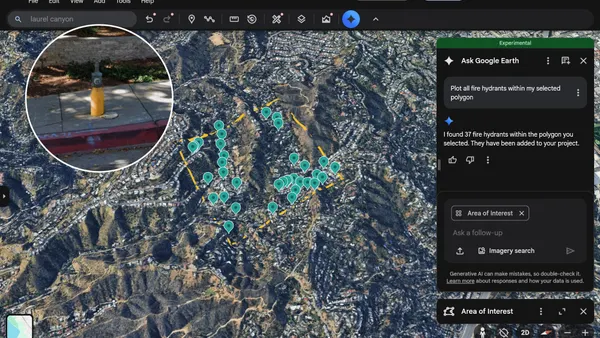Editor's note: This article was originally published in American City & County, which has merged with Smart Cities Dive to bring you expanded coverage of city innovation and local government. For the latest in smart city news, explore Smart Cities Dive or sign up for our newsletter.
The federal government began accepting electronic payments in 1986. Nearly 40 years later, paper-based payments continue to plague agencies with unnecessary costs, delays and risks of fraud.
To combat these issues, the White House released an Executive Order in March to finally end paper-based payments, mandating “the transition to electronic payments for all Federal disbursements and receipts” by September 30, 2025.
The order grants limited exceptions for emergency payments, but in nearly all circumstances, state and local governments must now use digital payment methods to receive federal funding. This is significant because state and federal budgets are “inseparably linked,” with the Pew Research Center finding that 36.4% of state revenue came from federal dollars in fiscal 2022.
Federal funding supports state-level public services like health care, education, transportation and infrastructure. To avoid disruptions to these critical programs, states must complete their transitions to digital payment processes by the September 2025 deadline.
In addition to maintaining compliance with the latest federal policies, adopting digital payment methods such as digital wallets can have time and cost-saving benefits for resource-constrained state governments.
Why is the federal government mandating digital payments?
The primary reason driving the shift to digital payments is cost savings. The White House’s executive order states that maintaining the physical infrastructure to digitize paper records cost more than $657 million in fiscal 2024 alone. These outdated legacy systems are unnecessarily burdensome, wasting time and taxpayer dollars. By digitizing payments upfront, government agencies can avoid these duplicative costs.
In addition to reducing spending on legacy infrastructure, migrating to digital payment methods can help public sector agencies at the federal, state and local levels protect funds from fraud and avoid improper payments.
Paper-based payments are far more susceptible to fraud, waste and abuse than digital ones. For example, the White House’s executive order states that Department of Treasury checks are 16 times more likely to be reported lost or stolen, returned undeliverable or altered than an electronic funds transfer. On the other hand, digital payment platforms have robust, built-in cybersecurity features, protecting funds from fraudulent claims and theft.
Improper payments, which include accidental payment errors as well as intentional fraud, are another issue tied to paper-based processes. Concerningly, a Government Accountability Office report found that since 2003, federal agencies have made roughly $2.8 trillion in improper payments. For context, you would have to spend $3 million every hour for 100 years to hit $2.8 trillion.
Digital methods enforce rule-based spending and provide a detailed, real-time record of every transaction to prevent improper payments. This not only enhances transparency but also facilitates smoother audits and evaluations by clearly demonstrating program compliance with regulatory standards.
The benefits of digital payment methods are extensive and indisputable. However, state governments, which have fewer employees and resources than federal agencies, may struggle to fully modernize their payment systems by the executive order’s deadline, leaving a significant portion of their funding in jeopardy.
How state and local governments can maximize digital funds
Like the federal government, state and local governments still operate with hybrid payment models, meaning they are somewhat dependent on paper-based processes. As state and local governments work to fully cut the paper-based cord and go strictly digital before the September 2025 deadline, there are a few key considerations to keep in mind.
It’s no secret that implementing new technology can create unintended disruptions, and operating on a tight schedule further compounds this risk. To ensure critical government services can continue without interruption, state and local governments should adopt technologies that seamlessly integrate with existing systems.
Once the digital payment infrastructure is complete and state and local governments can complete secure transactions with the federal government, they’ll need tools to quickly and efficiently distribute those funds to the communities they’re intended to support. This is where digital wallets can come into play.
Digital wallets: A safe, alternative way to distribute public funds
A digital wallet is an accessible online payment tool that public sector agencies can provide to an approved network of users. Users within the network can only make rule-based purchases, preserving fiscal compliance and oversight. Beyond compliance benefits, digital wallets allow state and local governments to distribute public funds seamlessly, track balances and ensure spending aligns with their program guidelines.
On top of quickly and securely distributing funds to beneficiaries, these tools can automate approval processes, saving time for public sector employees. In effect, digital wallets can help state governments meet federal requirements, focus on mission-oriented tasks and allow beneficiaries to access the funding they’re entitled to quickly and easily.
By embracing digital payments, state and local governments can reduce fraud, save costs and ensure uninterrupted access to vital federal funding. With the September 2025 deadline rapidly approaching, modernizing payment systems is essential to preserve public services and build a more efficient, accountable financial future.
Commentary is a space for state and local government leaders to share best practices that provide value to their peers. Email Smart Cities Dive to submit a piece for consideration, and view past commentaries here.
About the Author
Jamie Rosenberg is the founder and executive chairman of ClassWallet, a financial technology company reimagining how public funds are distributed to citizens. Prior to ClassWallet, Rosenberg founded AdoptAClassroom.org, one of the country’s leading education philanthropy platforms, ensuring classroom teachers get the support they need.
















